 |
 |
 |
| |
Body Mass Index and the Risk of Serious Non-AIDS Events
|
| |
| |
High Weight--and Low Weight--Tied to Non-AIDS Disease, Death in D:A:D
Conference on Retroviruses and Opportunistic Infections (CROI), February 13-16, 2017, Seattle
Mark Mascolini
Body mass index (BMI) above 30 kg/m(2) boosted risk of cardiovascular disease (CVD), non-AIDS cancers, and all-cause mortality when compared with BMI between 23 and 25 kg/m(2) in HIV-positive D:A:D study members [1]. The analysis also linked low BMI, even below 23 kg/m(2), to higher relative risk of CVD, non-AIDS cancers, and mortality. Diabetes risk rose with increasing BMI.
Overweight prevalence--on the rise is some HIV populations--is tied to a range of serious conditions in the general population. Being underweight also carries its risks. To get a better understanding of how BMI affects risk of serious non-AIDS events in people with HIV, D:A:D investigators conducted this large analysis.
The study population included D:A:D members on antiretroviral therapy with at least one BMI measure when treatment began or later and at least 1 year of additional follow-up. The analysis excluded people who already had CVD, diabetes, or cancer. Endpoints were CVD, diabetes, non-AIDS cancers, BMI-associated cancers (esophagus, pancreas, colon, rectum, breast, endometrium, kidney, thyroid, gallbladder), and all-cause mortality.
BMI of study participants was updated during follow-up; the researchers left at least a 1-year gap between the last BMI measure and a non-AIDS event to lower chances that the event affected BMI rather than the other way around. They used Poisson regression models adjusted for relevant confounders* to explore associations between BMI and non-AIDS events. The D:A:D team divided participants into six BMI groups: under 18.5, 18.5 to 23, 23 to 25, 25 to 27.5, 27.5 to 30, and over 30. In general, below 18.5 is considered underweight, 18.5 to 25 normal, 25 to 30 overweight, and 30 or over obese [2].
The analysis included 41,149 D:A:D participants, 73% of them men. Baseline age averaged 40 years and median baseline BMI was 23.3. During follow-up the researchers counted 1398 CVD events (4.8 per 1000 person-years), 1207 cases of diabetes (4.2 per 1000), 1143 non-AIDS cancers (3.9 per 1000), 184 BMI-related non-AIDS cancers (0.6 per 1000), 2418 deaths in men (11.2 per 1000), and 607 deaths in women (7.6 per 1000).
When compared with a BMI of 23 to 25, low BMI (either below 18.5 or 18.5 to 23) independently predicted all serious non-AIDS events except diabetes. BMI below 23 was also associated with all-cause mortality. Compared with a BMI of 23 to 25, obesity (BMI above 30) was independently associated with higher risk of CVD, diabetes, BMI-related non-AIDS cancers, and all-cause mortality (especially in men). Diabetes risk rose in a linear fashion across the BMI range, with all BMI ranges above 23 to 25 independently associated with diabetes. Compared with the 23-to-25 BMI group, BMI above 30 (obesity) was associated with nearly a 3.5-fold higher risk of diabetes.
The D:A:D investigators note that their analysis is limited by fewer participants at the low and high ends of the BMI range and by limitations of BMI as a marker of body weight or fat. With those caveats in mind, overall results showed a J-shaped curve indicating higher risk of serious non-AIDS illnesses under 23 kg/m(2) and over 30 kg/m(2). The exception was diabetes, for which risk climbed consistently as BMI rose.
The researchers propose that future work explore optimum BMI in antiretroviral-treated people and determine how short- and long-term changes in BMI may affect risk of non-AIDS conditions.
*All models adjusted for sex, race, HIV transmission route, cohort, calendar year, and time-updated age, smoking, and CD4 count. Model A also adjusted for current abacavir and cumulative use of nucleosides and protease inhibitors. Model B adjusted for factors in model A plus time-updated diabetes, total cholesterol, high- and low-density lipoprotein cholesterol, and systolic and diastolic blood pressure.
References
1. Achhra AC, Sabin C, Ryom L, et al. Body mass index and the risk of serious non-AIDS events: the D:A:D study. Conference on Retroviruses and Opportunistic Infections (CROI), February 13-16, 2017, Seattle. Abstract 693.
http://www.croiconference.org/sites/default/files/posters-2017/693_Achhra.pdf
2. National Heart, Lung and Blood Institute. Calculate your body mass index. https://www.nhlbi.nih.gov/health/educational/lose_wt/BMI/bmicalc.htm
--------------------
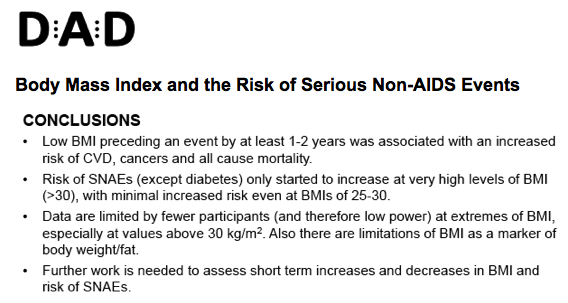
Body Mass Index and the Risk of Serious Non-AIDS Events
AC Achhra1,2, C Sabin3, L Ryom4, A d'Arminio Monforte5, CI Hatleberg4, S De Wit6, A Phillips3, C Pradier7, P Reiss8, F Dabis9, R Weber10, W El-Sadr11, O Kirk4, JD Lundgren4, MG Law1, for the D:A:D Study group
1The Kirby Institute, UNSW Australia, Sydney, Australia; 2JJP VA Medical Center and NCB Hospital, Icahn School of Medicine at Mt. Sinai, NY, USA; 3Research Department of Infection and Population Health, UCL, London, United Kingdom; 4CHIP, Department of Infectious Diseases, Section 2100, Rigshospitalet, University of Copenhagen, Copenhagen, Denmark; 5Dipartimento di Scienze della Salute, Clinica di Malattie Infettive e Tropicali, Azienda Ospedaliera-Polo Universitario San Paolo, Milan, Italy; 6Division of Infectious Diseases, Saint Pierre University Hospital, Universite Libre de Bruxelles, Brussels, Belgium; 7Department of Public Health, Nice University Hospital, Nice, France; 8Academic Medical Center, Dept. of Global Health and Div. of Infectious Diseases, University of Amsterdam, and HIV Monitoring Foundation, Amsterdam, The Netherlands; 9CHU de Bordeaux and INSERM U897, Universite de Bordeaux, Talence, France, 10Department of Infectious diseases and Hospital epidemiology, University Hospital Zurich, University of Zurich, Zurich, Switzerland; 11ICAP-Columbia University and Harlem Hospital, New York, USA
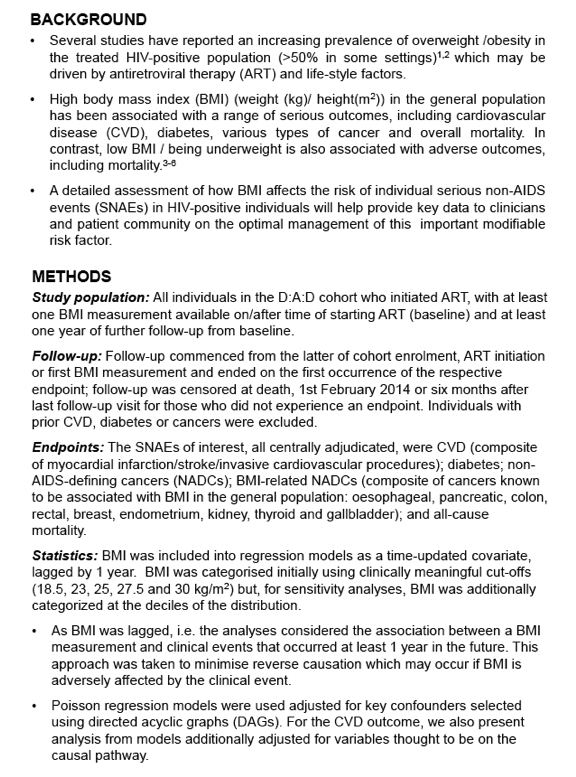
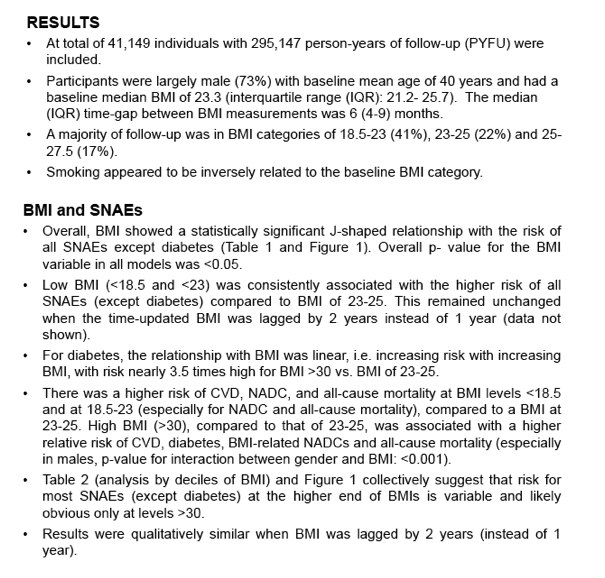
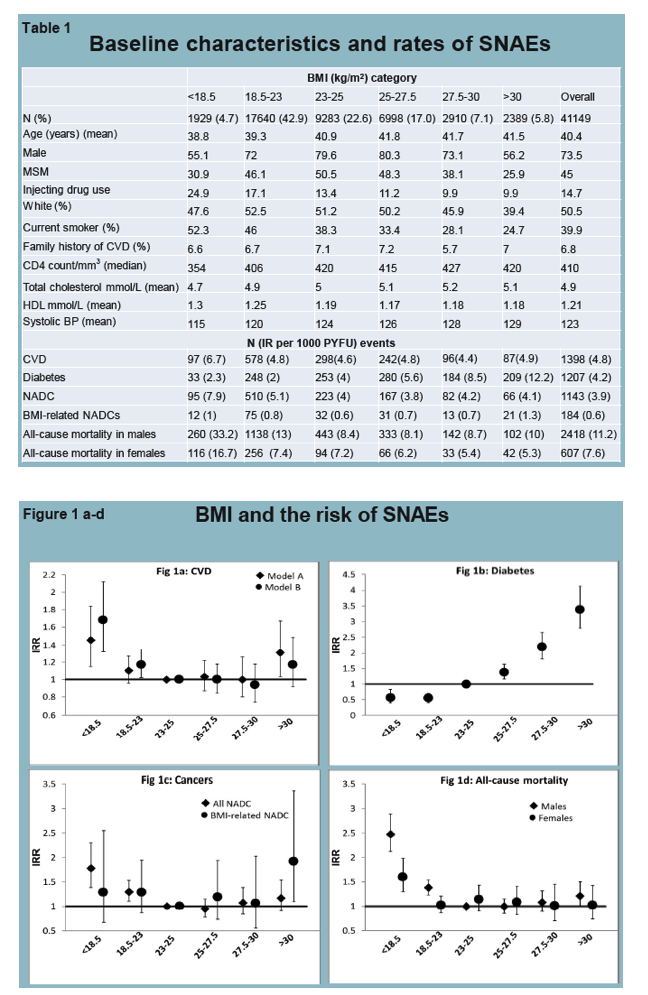
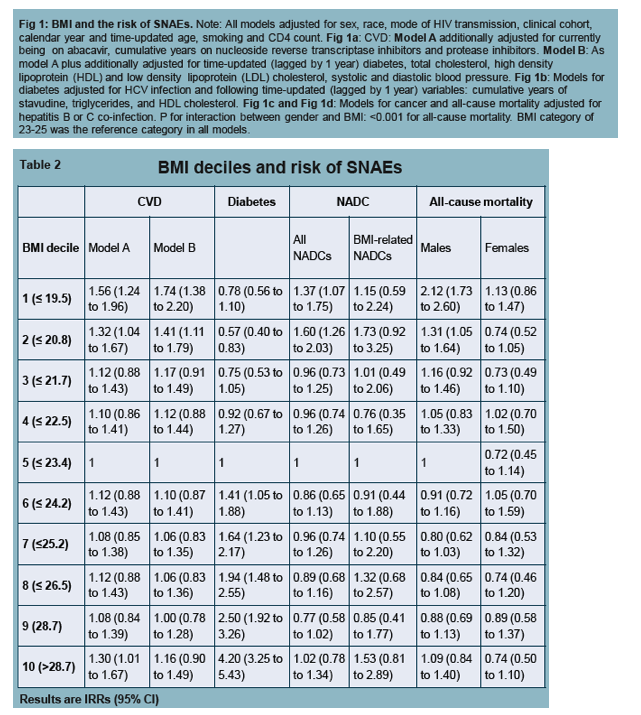
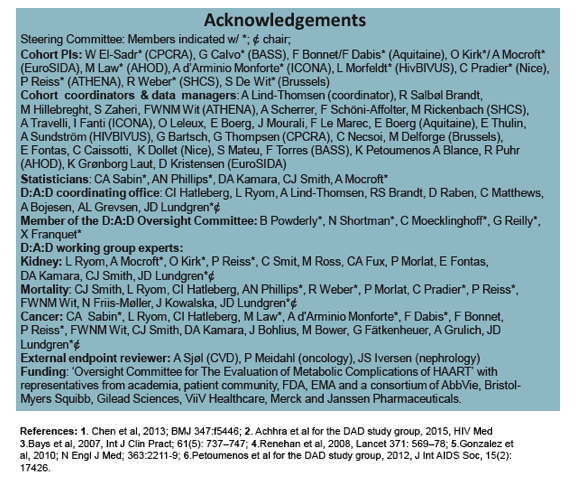
|
| |
|
 |
 |
|
|